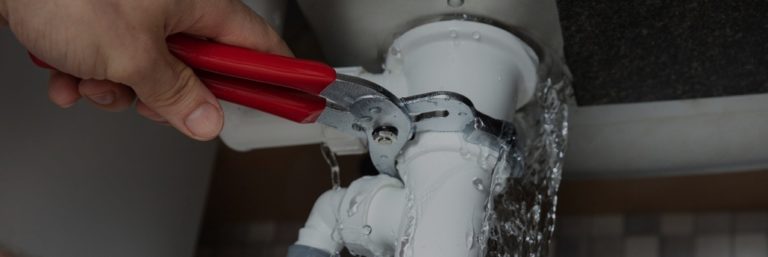6 Ways to Find Concealed Water Leaks in Your House
6 Ways to Find Concealed Water Leaks in Your House
Blog Article
In this article down the page you can locate a lot of awesome information on the subject of Hacks to detect leaks.

Early detection of dripping water lines can mitigate a potential catastrophe. Some tiny water leaks might not be visible.
1. Take A Look At the Water Meter
Inspecting it is a proven method that aids you find leakages. If it moves, that shows a fast-moving leak. This implies you may have a sluggish leakage that could even be underground.
2. Examine Water Intake
Evaluate your water bills and track your water consumption. As the one paying it, you should observe if there are any type of inconsistencies. If you find sudden changes, in spite of your consumption being the same, it means that you have leakages in your plumbing system. Keep in mind, your water bill ought to drop under the same variety every month. An unexpected spike in your costs suggests a fast-moving leak.
On the other hand, a steady increase monthly, even with the very same routines, shows you have a sluggish leakage that's additionally gradually escalating. Call a plumber to extensively check your property, specifically if you really feel a cozy area on your floor with piping beneath.
3. Do a Food Coloring Test
When it comes to water intake, 30% comes from commodes. If the shade in some way infiltrates your bowl throughout that time without flushing, there's a leakage between the tank and bowl.
4. Asses Outside Lines
Do not neglect to examine your exterior water lines as well. Test faucets by affixing a yard tube. Must water seep out of the link, you have a loose rubber gasket. Change this and also make sure all connections are tight. If you have actually got a sprinkler system, it will aid get it skillfully analyzed as well as preserved yearly. One tiny leak can waste tons of water and spike your water expense.
5. Inspect as well as Analyze the Scenario
Home owners must make it a practice to inspect under the sink counters and also also inside cabinets for any bad odor or mold and mildew growth. These two red flags suggest a leakage so prompt interest is required. Doing regular assessments, even bi-annually, can save you from a significant problem.
Much more significantly, if you know your residence is already old, keep a watchful eye on your heating systems, pipes, pipes and so on. Look for stainings and deteriorating as a lot of pipes and also home appliances have a life expectancy. They will also normally deteriorate due to wear and tear. Don't wait for it to escalate if you presume leaking water lines in your plumbing system. Call a professional plumber right away so you don't end up with a dreadful mess in your house.
Early discovery of leaking water lines can minimize a prospective catastrophe. Some little water leakages might not be noticeable. Examining it is a proven way that aids you uncover leakages. One tiny leak can throw away bunches of water and surge your water bill.
If you suspect dripping water lines in your plumbing system, don't wait for it to intensify.
How to Know If Your Home Has a Hidden Leak
Water Meter Reveals Inexplicable Water Usage
If you’d like to test whether or not there’s a leak somewhere in your home, you can do this using your water meter. Here is how to conduct the test:
Don’t use any water in your home for at least 30 minutes; this also means not turning on faucets or water-using appliances.
Go outside, and check your water meter for activity.
If your water meter shows that there was activity, even though no one was using any water, this proves that there is a leak in your home.Visible Mold or Mildew Growth
Leaks behind walls create moist, dark environments that allow mold and mildew to grow and thrive. Eventually, you might see mold growth forming on the wall closest to a hidden leak.
If mold is growing in an area that receives a high amount of moisture, such as a bathroom, it may simply be an indication that better ventilation is needed. However, if you see mold growth on a wall or the ceiling in an area where you would not expect, you probably have a hidden leak.
Musty, Mildew Odor
Sometimes you might not be able to see the mold or mildew that is growing as a result of a leak. However, the smell can give the problem away just as easily. If you catch a whiff of something musty, there’s a good chance that old water is collecting somewhere in your home that you can’t see.
Stained/Warped Walls, Ceilings, or Floors
When your home soaks up water, a variety of red flags can become visible, including ceiling stains, bubbling drywall, warped walls, and sagging floors. While these issues can be caused by excess humidity, they can also be signs that a pipe or plumbing connection has started leaking behind your walls.
Inexplicably High Water Bill
After a while, you get a general sense for what your water bill should be. If you own a pool or sprinkler system, your bill will tend to be higher during summer. However, if you receive a water bill that seems especially high, and you can’t figure out what caused it, then you may have a hidden leak somewhere that’s increasing your bill.
https://www.plumbingjoint.com/blog/2019/july/how-to-know-if-your-home-has-a-hidden-leak/

I'm just very fascinated by Detecting hidden plumbing leaks and I'm hoping you enjoyed the post. Enjoyed reading our write up? Please share it. Help another person discover it. Thank you for your time. Visit us again soon.
Report this page